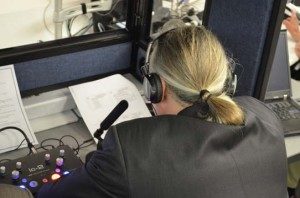Table of Contents
Key Points
- The origins of simultaneous interpretation date back to ancient civilizations
- Early interpretation methods relied on consecutive interpretation
- Major milestones shaped the development of simultaneous interpretation systems
- Colonel Leon Dostert pioneered modern simultaneous interpretation
- The United Nations standardized simultaneous interpretation globally
- Modern technology continues to enhance interpretation accuracy
The Origins of Simultaneous Interpretation

Simultaneous interpretation is a sophisticated communication method that enables real-time language transfer between speakers of different languages. While it requires advanced training and specialized equipment today, its foundations lie in humanity’s long-standing need for cross-language communication.
Understanding the history of simultaneous interpretation helps explain why it is essential for modern diplomacy, international organizations, and global events.
Early Developments in Interpretation
The origins of interpretation can be traced back to Ancient Egypt, where interpreters emerged as societies expanded beyond basic gestures and symbols. Ancient Greek and Roman civilizations also relied heavily on interpreters in diplomacy, trade, and military operations.
Interpreters in Ancient Civilizations
In many early societies, interpreters—often enslaved or appointed individuals—served as linguistic bridges between rulers, merchants, and foreign delegations. Their role was essential for maintaining political alliances and commercial relationships.
Key Milestones in the History of Interpretation
A significant milestone in interpretation history occurred after World War I during the Paris Peace Conference, where consecutive interpretation was widely used. Although effective, this method slowed negotiations and limited spontaneous discussion.
Limitations of Early Interpretation Methods
The growing complexity of international dialogue revealed the need for a faster, more efficient solution, ultimately driving innovation toward simultaneous interpretation.
Key challenges of consecutive interpretation included:
- Reduced natural flow of discussion
- Lengthy meetings due to repeated speech delivery
Colonel Leon Dostert and the Birth of Simultaneous Interpretation Systems
Colonel Leon Dostert played a pivotal role in the development of modern simultaneous interpretation systems. His groundbreaking work was first implemented during the Nuremberg Trials in 1945, where interpreters worked in rotating teams to ensure uninterrupted interpretation.
This innovation dramatically improved:
- Speed of multilingual communication
- Accuracy and consistency during legal proceedings
The success of these systems proved that simultaneous interpretation was both practical and scalable.
Simultaneous Interpretation and the United Nations
Following its success at the Nuremberg Trials, simultaneous interpretation was formally adopted by the United Nations in 1947. Through UN Resolution 152, it became a permanent service supporting the organization’s six official languages.
This decision established simultaneous interpretation as the global standard for international institutions and diplomatic communication.
Modern Advances in Simultaneous Interpretation Equipment
Today, simultaneous interpretation relies on advanced technology, including soundproof booths, wireless transmitters, interpretation consoles, and remote interpreting platforms. While the tools have evolved, the core objective remains unchanged: delivering accurate, real-time communication with minimal delay.
Modern interpretation systems now support:
- Hybrid and remote multilingual events
- Large-scale international conferences
Related: Simultaneous Interpretation and the Brain
FAQs:
What is simultaneous interpretation?
Simultaneous interpretation is a method where interpreters translate spoken language in real time while the speaker continues talking.
What is the history of simultaneous interpretation?
Its roots trace back to ancient civilizations, but modern simultaneous interpretation emerged during the Nuremberg Trials and was later adopted by the United Nations.
What is an example of a simultaneous interpreter?
A simultaneous interpreter at a UN conference translating speeches live through headsets for multilingual audiences.
What are the benefits of simultaneous interpretation?
It enables faster communication, supports multilingual participation, and preserves the natural flow of speech.
Call to Action
Simultaneous interpretation has shaped global communication for decades—and its importance continues to grow. At Translation Excellence, we provide professional simultaneous interpretation and translation services supported by expert linguists and modern technology.
Explore our interpretation solutions to ensure accurate, real-time communication for your international meetings and events.
Related: Simultaneous Interpretation Introduction |Part 1 of 6


